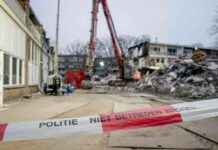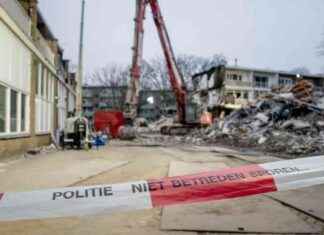the Future of high-rise buildings must not be sterile blocks of steel and concrete, but green oases, where people share their homes with birds and insects, believes the Italian architect Stefano Boeri. He stands together with his colleagues, Gianandrea Barreca and Giovanni La Varra behind the two towers, Bosco Verticale, which translated directly means the vertical forest.
the Buildings, which is located in Milan’s exclusive business district, Porta Nuova, in Italy, is lined with as many as 800 trees and 4,500 shrubs and 15,000 plants.
in Order to find suitable vegetation that can thrive under the special conditions, such as high-rises, was a three-year study set in the lake, and among the trees, that qualified, was, among other things beech, maple, cherry, olive and apple trees.
All the plants are planted in built-in boxes on the højhusenes terraces and balconies. The trees vary in height from 3 to 9 metres. The bigger specimens are attached to a cable, so they are not a danger to passers-by, if the tribe was going to puke. The biggest tree roots are also attached in a stålbur, as in the case of a heavy storm does not tumble over.
Green walls
Facts about Bosco Verticale in Milan
2009-2014
113
85 metres
Floors: 19
Area: 9.417 m2
116 metres
Floors: 27 above the ground plus 3 kælderetager
Area: 18.717 m2
Bosco Verticale, which was completed in 2014, is a prototype, as Stefano Boeri would like to see other architects let themselves be inspired by, so cities can be provided with more forest and a better urban biodiversity. If the two højhuses vegetation was spread out, it would correspond to a 20,000 m2 of forest.
Højhusenes ecosystem to attract birds and insects, and to give it a boost was a 1,200 mariehøner unleashed after the plants were in place.
the Vegetation in the two high-rise transforms annually about 20,000 pounds of CO2 to the oxygen, additionally cleanses the also the air of dust particles. Another advantage of the green façade is that the plants in the summer shields for the sun, which reduces the indoor temperature by two to three degrees and relieves the load on the buildings air conditioning. In winter, on the other hand, free access to the sun’s rays, when plant leaves have fallen off.
The annual water consumption of the vegetation is located on about 3,500 m3. All of the buildings trees and plants are connected to an advanced irrigation system that uses rainwater collected from the roofs and purified waste water from the apartments.
the Planting is typically checked by gardeners six times a year. Four from the inside of the apartments and two from the outside. The individual owners of the apartments do not crop or do anything else at the plants without prior permission.
Bosco Verticales, green profile rows, however, far beyond the many plants. The two højhuses take is equipped with 500 m2 of solar panels, and geothermal energy for heating. The four heat pumps provide not only the Bosco Verticale, but also some of the surrounding buildings with heating.
in General, about sustainable housing
the District of Porta Nuova train station, high-rises, is considered to be one of the most exclusive areas not only in Italy but throughout Europe, and the Bosco Verticale also offer virtually everything you could want from a home.
All 113 apartments have at least one balcony or terrace, and the three metre high windows ensure a great view. There is also underground parking, a gym, a concierge and a 24 hour concierge service (help with activities of daily living).
Since the apartments were put on sale back in 2011, was the cost of a 80 m2 apartment of about 4.7 million kr., while a 200 m2 penthouse apartment could be acquired for about 14.3 million dkk. Since prices have risen, and currently is a 76 m2 bedroom apartment for sale of approx. 6.5 million dkk. Here follows a 22 m2 balcony, cellar and parking space in the bargain.
Sustainable house costs only $ 500. in the operation of the month
Even if you don’t have plans to move to Milan, there is still opportunity to experience the high rises from the inside, as some of the apartments rented out to tourists. For around 1700 kr. you can rent a one bedroom apartment for a single night.
Stefano Boeris green construction has attracted international attention and won several awards, fol.a. ‘Best Tall Building Worldwide by 2015’ and ‘International High Rise Award 2014’. It has also achieved the coveted Gold Leed certification for sustainable construction.
Bosco Verticale is the first of its kind, but other vertical forests have since joined, and even more are on the way. In 2015 was the world so far, the largest vertical forest finished in Bogota, Colombia, where Santalaia – the building’s facade is covered by no fewer than 85,000 plants, while a skyscraper with 23.000 trees and shrubs has just been completed in Taiwan’s capital, Taipei. Stefano Boeris own studio is also working on several vertical forests in both Europe as well as China.
A small piece of Southern europe in Espergærde
Facts about Bolius
Bolius – the Homeowners ‘ knowledge Centre is owned by Realdania.
Bolius is an independent non-profit organisation, which aims to convey the knowledge to the homeowners. Bolius does not sell products or services.








